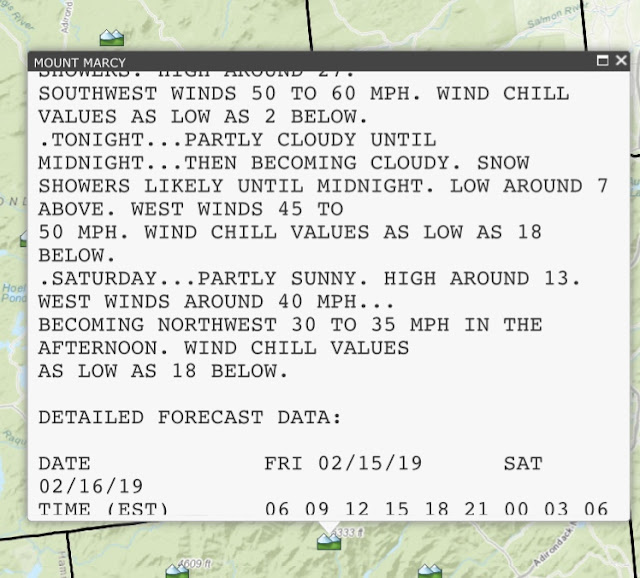There were a few reality checks on the way down after reaching the summit of Algonquin peak: how much pain will I be in and how late do I want to stay in the ADK on a Sunday? With a little ibuprofen and some essential oils, my shoulder and quad pain resolved significantly. However, doing another high peak meant it was going to be a longer day and then a 4 hr drive back home. After discussing the subject with the entire group we decided that it would be better for all of us to do another hike together but something on the easier/shorter scale.
I read several great reviews from previous hikers that Noonmark has 360 degree views of the central and eastern high peaks and so we decided to do it. We packed and headed to the Ausable Club parking with sunny skies and temperatures hovering in the low 20's.
The Ausable parking lot was like a frozen lake, and as soon as I stepped out of the truck, I was on the ground immediately. Thankfully there were no injuries except for a stubbed finger. Better option would have been to put on MICROspikes while sitting in the vehicle and then get out. The road leading up to the trailhead was covered in black ice as well.
After gearing up we headed 0.5 miles up the road to the registration booth on the left side of the road with a green and white sign marked "Noonmark Trail Way."
At the start of the trail there was packed snow, but because of the previous day's hike, I felt more comfortable in my snowshoes. Some of the guys opted to just hike in microspikes.
The trail started out with a steady climb to the first intersection. We took a left to go 1.5 miles to the summit. Going right leads to Round and Dix Mountains.
The new direction also revealed a drastic change in incline. Some sections of the trail were 30-40 degrees of incline, making a slow progress up the mountain.
We took a nice break after a steep section with great views of Giant Mountain to the east. After this point the trail made a turn to the northeast which revealed some great views of Keene Valley.
The trail continued at a steep ascent with sections of the trail having deeper snow and narrower walking space. On some steeper sections, I found it easier to hike on the sides of the trail. On the northern part of the mountain, there were some great lookout spots facing the Great Range and later facing Dial and Nippletop Mountains.
The views were absolutely worth the challenging ascent. It was magnificent to soak in the views of Dix, Dial, and Nippletop to the west with the Great Range to the northwest. After many photos, a water break, and changing gear to MICROspikes we headed back down the mountain.
Butt sliding is the best way to describe the first 15-20 minutes of the descent. A little further down we came across the second group heading up. Using MICROspikes really helped on the way down because the trail was well packed down and there was no post-holing. We made it down safely in less then an hour. We meet the rest of the group at the car.
Once in Keene Valley it would be sin not to stop in at Noon Mark Diner for lunch and to pick up some pies and cookies for the road. It was a "full experience" to hike Noonmark Mountain and then eat at the diner.
TRIP STATS:
Distance: 5.1 miles round trip
Time: 4 hours including stops
Elevation gain: 2460 ft









































































